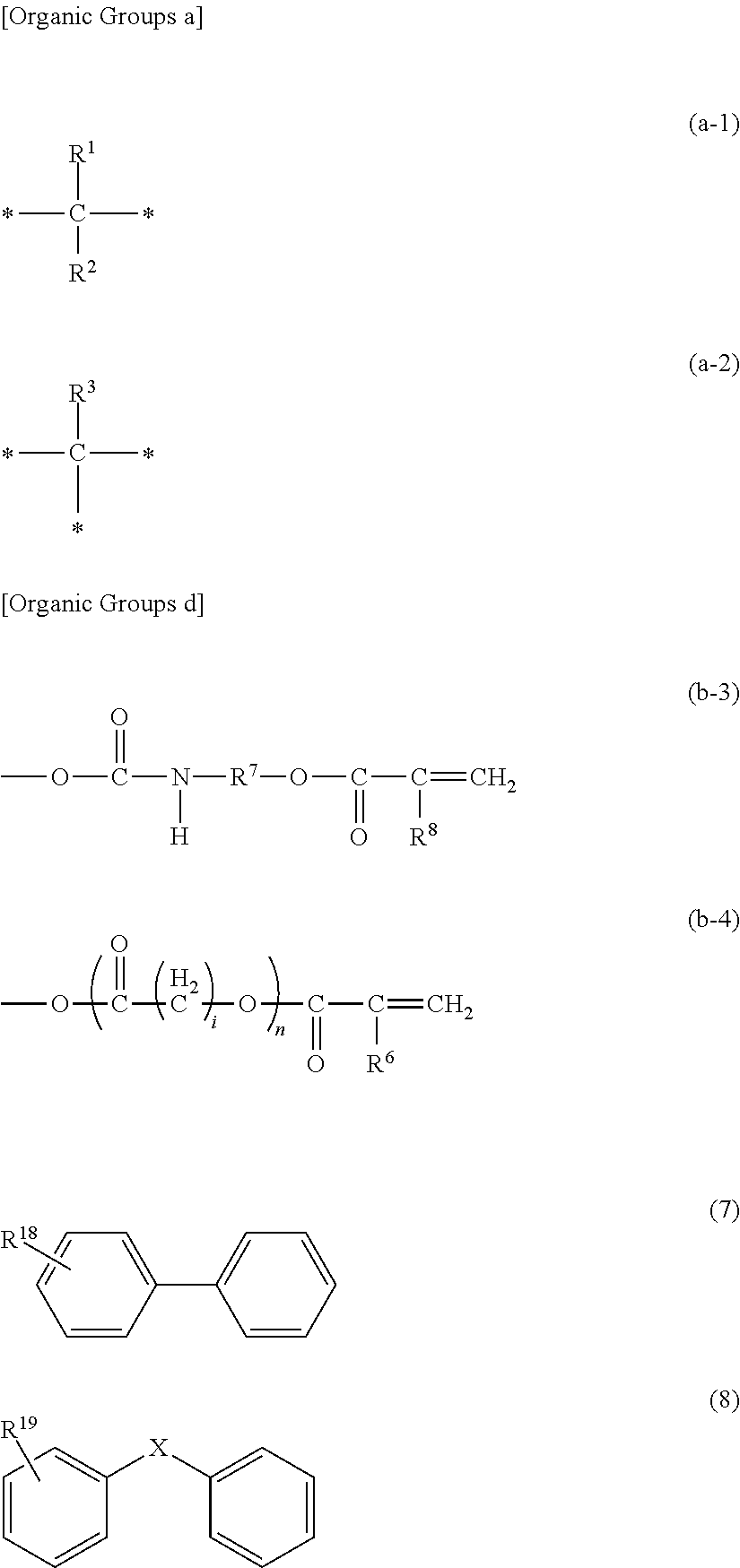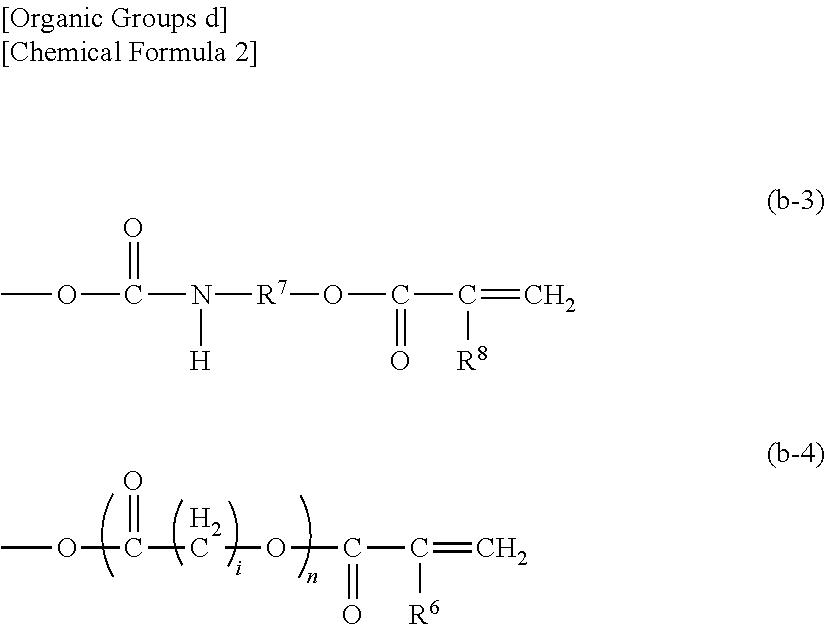Photocurable inkjet ink
a technology of inkjet inkjet and inkjet printing, which is applied in the field of photocurable inkjet printing, can solve the problems of reducing light extraction efficiency, increasing manufacturing steps, and unable to achieve high image quality any longer, and achieves excellent discharge properties and photocurability, low yellowness, and high refractive index
- Summary
- Abstract
- Description
- Claims
- Application Information
AI Technical Summary
Benefits of technology
Problems solved by technology
Method used
Image
Examples
preparation example 1
Preparation Example of Acrylate A-1 (Compound Represented by Formula (4))
[0129]A 100 mL three-necked flask was equipped with a thermometer and a dropping funnel. 9.19 g (30 mmol) of TrisP-HAP (trade name, made by Honshu Chemical Industry Co., Ltd.), 9.21 g (91 mmol) of triethylamine, and 40 ml of THF were placed in the flask and stirred to dissolve. A solution obtained by dissolving 8.24 g (91 mmol) of acrylic acid chloride in 10 ml of THF in an ice bath was dripped therein over 30 minutes using the dropping funnel. After the dripping was completed, the reaction temperature was increased to 50° C. and the resultant was stirred for 3 hours, followed by lowering the temperature to stop the reaction. The reaction solution was cooled to room temperature, and then unreacted acrylic acid chloride was quenched with ice water. After that. The resultant was subjected to separation using a saturated sodium hydrogen carbonate aqueous solution, and acrylic acid being a decomposition product of ...
preparation example 2
Preparation Example of Acrylate A-2 (Compound Represented by Formula (5))
[0130]A 100 mL three-necked flask was equipped with a thermometer and a dropping funnel. 12.74 g (30 mmol) of TrisP-PA (trade name, made by Honshu Chemical Industry Co., Ltd.), 9.21 g (91 mmol) of triethylamine, and 40 ml of THF were placed in the flask and stirred to dissolve. A solution obtained by dissolving 8.24 g (91 mmol) of acrylic acid chloride in 10 ml of THF in an ice bath was dripped therein over 30 minutes using the dropping funnel. After the dripping was completed, the reaction temperature was increased to 50° C. and the resultant was stirred for 3 hours, followed by lowering the temperature to stop the reaction. The reaction solution was cooled to room temperature, and then unreacted acrylic acid chloride was quenched with ice water. After that. The resultant was subjected to separation using a saturated sodium hydrogen carbonate aqueous solution, and acrylic acid being a decomposition product of ...
preparation example 3
Preparation Example of Acrylate A-3 (Compound Represented by Formula (6))
[0131]A 100 mL three-necked flask was equipped with a thermometer and a dropping funnel. 14.42 g (30 mmol) of TrisP-TC (trade name, made by Honshu Chemical Industry Co., Ltd.), 9.21 g (91 mmol) of triethylamine, and 40 ml of THF were placed in the flask and stirred to dissolve. A solution obtained by dissolving 8.24 g (91 mmol) of acrylic acid chloride in 10 ml of THF in an ice bath was dripped therein over 30 minutes using the dropping funnel. After the dripping was completed, the reaction temperature was increased to 50° C. and the resultant was stirred for 3 hours, followed by lowering the temperature to stop the reaction. The reaction solution was cooled to room temperature, and then unreacted acrylic acid chloride was quenched with ice water. After that. The resultant was subjected to separation using a saturated sodium hydrogen carbonate aqueous solution, and acrylic acid being a decomposition product of ...
PUM
| Property | Measurement | Unit |
|---|---|---|
| refractive index | aaaaa | aaaaa |
| boiling point | aaaaa | aaaaa |
| boiling point | aaaaa | aaaaa |
Abstract
Description
Claims
Application Information
 Login to View More
Login to View More - R&D
- Intellectual Property
- Life Sciences
- Materials
- Tech Scout
- Unparalleled Data Quality
- Higher Quality Content
- 60% Fewer Hallucinations
Browse by: Latest US Patents, China's latest patents, Technical Efficacy Thesaurus, Application Domain, Technology Topic, Popular Technical Reports.
© 2025 PatSnap. All rights reserved.Legal|Privacy policy|Modern Slavery Act Transparency Statement|Sitemap|About US| Contact US: help@patsnap.com



